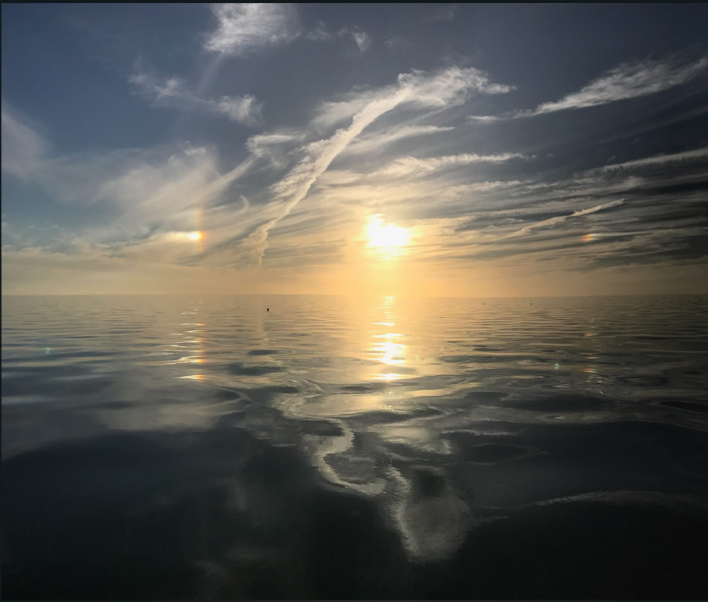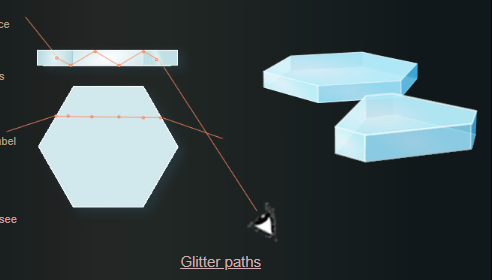Not so ordinary sundog
Not So Ordinary Sundog: A Phenomenon of Atmospheric Optics
Sundogs, also known as 22° parhelia, are a captivating optical phenomenon that frequently graces our skies. These celestial spectacles are more commonly observed than rainbows, appearing on average more than once a week. While they may be a familiar sight, sundogs are anything but simple.
The vibrant colors exhibited by sundogs are a result of light refraction through the side faces of plate aspect hexagonal ice crystals. These crystals align themselves horizontally due to aerodynamic forces, allowing for the formation of sundogs. However, the journey of light rays through these crystals is far from straightforward.
When the sun is near the horizon, rays passing through the crystals have a relatively unobstructed path. However, as the sun rises higher in the sky, the rays skew and bounce between the upper and lower horizontal faces of the ice crystals. This complex interaction gives rise to the characteristic displacement of the "22 degree" parhelion, which moves further away from the sun as it ascends.
Interestingly, each sundog is actually a double phenomenon. The ice crystals responsible for the formation of sundogs are birefringent, meaning that they split incoming rays into two polarized components. As a result, two slightly displaced sundogs are generated. By using a polarizing filter and manipulating its orientation, one can witness the sundog jumping back and forth as the two components become visible.
The intricate nature of sundogs serves as a reminder of the astonishing complexity present within atmospheric optics. These phenomena are not only visually captivating but also provide valuable insights into the behavior of light in our atmosphere. By studying and understanding sundogs, scientists can further unravel the mysteries of atmospheric physics.
In addition to their scientific significance, sundogs hold cultural and historical importance in various societies. Throughout history, sundogs have been interpreted as omens or signs of impending weather changes. Their presence has been associated with folklore and myths, often inspiring awe and wonder in those who witness them.
It is worth noting that sundogs are just one of many extraordinary atmospheric optical phenomena that can occur. From halos and arcs to iridescent clouds and sun pillars, our atmosphere is a canvas for a multitude of captivating visual displays. Each phenomenon offers its own unique blend of beauty and scientific intrigue, showcasing the harmonious interaction between light and the atmospheric elements.
In conclusion, sundogs are far from ordinary. These ethereal spectacles, with their vivid colors and intricate formation, captivate both scientists and casual observers alike. By shedding light on the complex processes that give rise to sundogs, we gain a deeper appreciation for the wonders of atmospheric optics. So, keep your eyes to the sky, for you never know when the next extraordinary sundog will grace our world with its presence.

The not so ordinary sundog
Timothy Heitman captured this evocative scene between the Florida Keys and Florida mainland.
Sundogs (22° parhelia) flank the sun. Sun and sundog glitter paths reflect from the glassy sea.
Image ©Timothy Heitman, shown with permission
Sundogs (and the 22° halo) are the most often seen optical effects in the atmosphere. They are visible on average more than once a week - far more often than a rainbow. Common they may be, simple they are not.
Their colours come from two refractions through the side faces of plate aspect hexagonal ice crystals. Aerodynamic forces align their large hexagonal faces within a degree or so of horizontal.
Ray paths through the crystal are not simple. Only when the sun is near the horizon do rays have an easy passage. Otherwise they skew and bounce up and down between the upper and lower horizontal faces.
Skew rays from a sun away from the horizon have another consequence. The "22 degree" parhelion moves further and further from the sun as it climbs. Confusingly, the 22 degree label refers only to the angle of minimum deviation through the crystal.
There is a further complication. Each sundog is double!
Ice is birefringent and rays entering crystals split into two polarised components. They generate two slightly displaced dogs. Flip or quickly rotate a polarising filter and you might see a sundog jumping back and forth as the two components are seen. Try it.

Note: this article has been automatically converted from the old site and may not appear as intended. You can find the original article here.
Reference Atmospheric Optics
If you use any of the definitions, information, or data presented on Atmospheric Optics, please copy the link or reference below to properly credit us as the reference source. Thank you!
-
<a href="https://atoptics.co.uk/blog/not-so-ordinary-sundog/">Not so ordinary sundog </a>
-
"Not so ordinary sundog ". Atmospheric Optics. Accessed on November 26, 2024. https://atoptics.co.uk/blog/not-so-ordinary-sundog/.
-
"Not so ordinary sundog ". Atmospheric Optics, https://atoptics.co.uk/blog/not-so-ordinary-sundog/. Accessed 26 November, 2024
-
Not so ordinary sundog . Atmospheric Optics. Retrieved from https://atoptics.co.uk/blog/not-so-ordinary-sundog/.